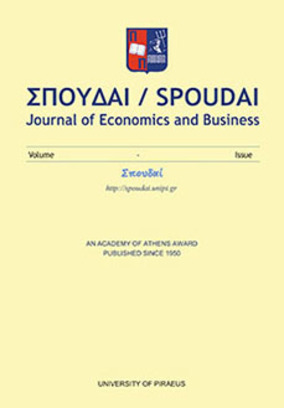Efficient AIS data processing for environmentally safe shipping
Part of : Σπουδαί : journal of economics and business ; Vol.63, No.3-4, 2013, pages 181-190
Issue:
Pages:
181-190
Author:
Abstract:
Reducing ship accidents at sea is important to all economic, environmental, and cultural sectors of Greece. Despite an increase in traffic and national monitoring, ships formulate routes according to their best judgment risking an accident. In this study we take a dataset spanning in 3 years from the AIS (Automatic Identification System) network, which is transmitting in public a ship's identity and location with an interval of seconds, and we load it in a trajectory database supported by the Hermes Moving Objects Database (MOD) system. Presented analysis begins by extracting statistics for the dataset, both general (number of ships and position reports) as well as safety related ones. Simple queries on the dataset illustrate the capabilities of Hermes and allow to gain insight on how the ships move in the Greek Seas. Analysis of movement based on an Origin-Destination matrix between interesting areas in the Greek territory is presented. One of the newest challenges that emerged during this process is that the amount of the positioning data is becoming more and more massive. As a conclusion, a preliminary review of possible solutions to this challenge along with others such as dealing with the noise in AIS data is mentioned and we also briefly discuss the need for interdisciplinary cooperation.
Subject (LC):
Keywords:
AIS, data, environment, analysis, Hermes MOD, Aegean sea
Notes:
Περιέχει πίνακα, διαγράμματα και βιβλιογραφία, Special Issue: Management of maritime safety, security and environmental protection
References (1):
- Dean, J. and Ghemawat, S., 2008. MapReduce: Simplified Data Processing on Large Clusters.Communications of the ACM, 51(1):107-113.Devogele, T., Etienne, L. and Ray, C., 2013. Maritime Monitoring. In C. Renso, S. Spaccapietraand E. Zimanyi (Eds.), Mobility Data: Modeling, Management, and Understanding (pp. 224-243). Cambridge University Press.EMSA, 2012. European Maritime Safety Agency, Annual Report 2011, 114 pages, June 2012.Güting, R.H., Böhlen, M.H., Erwig, M., Jensen, C.S., Lorentzos, N.A., Schneider, M. and Vazirgiannis,M., 2000. A foundation for representing and querying moving objects. ACM Transactionson Database Systems, 25(1):1-42.IALA, 2004. The Automatic Identification System (AIS), Volume 1, Part I, Operational Issues, 131pages.Pelekis, N., Frentzos, E., Giatrakos, N. and Theodoridis, Y., 2008. HERMES: aggregative LBS viaa trajectory DB engine, In Proceedings of ACM SIGMOD.Pelekis, N., Frentzos, E., Giatrakos, N. and Theodoridis, Y., 2013. Supporting movement inORDBMS – the “Hermes” MOD engine. Int’l Journal of Knowledge-based Organizations(IJKBO), in press.Pelekis, N. and Theodoridis, Y., 2013. Mobility Data Management and Exploration. Springer.Spaccapietra, S., Parent, C., Damiani, M., Macedo, J., Porto, F. and Vangenot, C., 2008. A conceptualview on trajectories. Data & Knowledge Engineering, 65(1):126-146.Theodoridis, Y., Vazirgiannis, M. and Sellis, T., 1996. Spatio-Temporal Indexing for Large MultimediaApplications. In Proceedings of ICMCS, page 0441.Yan, Z., Chakraborty, D., Parent, C., Spaccapietra, S. and Aberer, K., 2012, SeMiTri: A Frameworkfor Semantic Annotation of Heterogeneous Trajectories. In Proceedings of EDBT, 259-270.Zhao, J., Wroe, C., Goble, C., Stevens, R., Quan, D. and Greenwood, M., 2004. Using semantic Webtechnologies for representing E-science provenance. In Proceedings of ISWC, 92-106.




